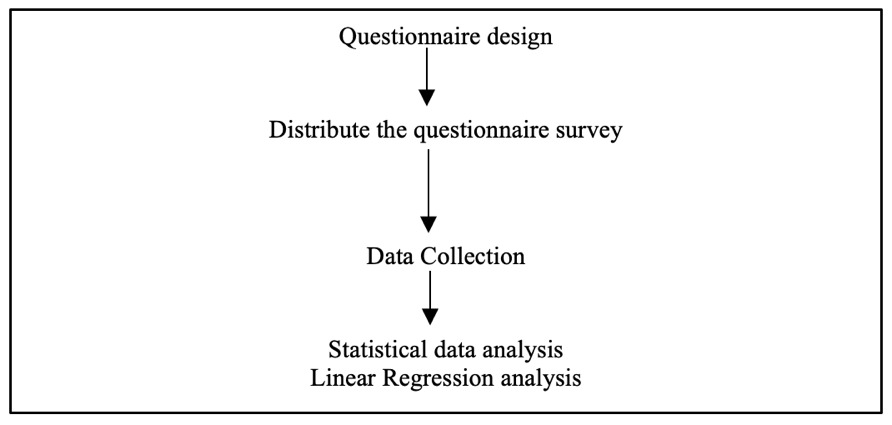Abstract
A cloud e-Learning network environment provides a higher impact of teaching and learning to an Institution of higher learning (IHL). The success in using e-Learning in the cloud network environment will be interpreted by selecting the right cloud factors adoption. Cloud factors adoption play an important role in determining the success of IHL in using e-Learning in the cloud network environment. In identifying the factors of adoption, the opinions from employees that have experience in using the cloud are required. Therefore, data collection between employees that have experience in using the cloud network was conducted to obtain the important success factors adoption. Data analysis was performed to identify the factor adoption and the integration between the important factor’s adoption. In determining the success factors adoption for the cloud network environment, the integration between the factor’s adoption is an important technique to identify the interactions between the factor. The result shown Employee context consist of awareness, benefits and motivation as an important factor adoption. The factor was integrating with the Organization context, Technology context and Environment context based on the result in linear regression analysis. From the analysis, the result can be exposed the correct factor adoption and giving the benchmark for IHL in selecting and using e-Learning at cloud network environment.
Keywords: Adoption, cloud, data analysis, e-Learning, integration, linear regression
Introduction
The cloud network environment is the important network environment in implementing an e-Learning application today (Aziz, Osman & Widyarto, 2020). The studies of the important factor adoption in adopting e-Learning to cloud by the Institution of Higher Learning (IHL) is needed before implementing the cloud network environment (Qasim & Sidiq, 2018). Preparing and managing the network environment is a difficult process that requires (Naveed et al., 2019). Planning from IHL are needed in selecting the correct network infrastructure in implementing e-Learning in a cloud network environment. While the e-Learning system usage is important for every IHL as a tool for supported teaching and learning activity and it can be more helpful in implementing the e-Learning system using a cloud network environment (Aziz et al., 2019).
The IHL seriously put an effort to increase the awareness for implemented compatible of e-Learning. By using the e-Learning the delivery of the teaching activity giving more efficient and can getting better delivering of teaching and learning (Xue & Xin, 2017). The support of an appropriate network environment can be giving the best quality delivering teaching and learning activities (Jan et al., 2020). A cloud network environment is a new approach in helping to distribute learning information (Luyan & Qinyi, 2021).
Most IHL was concern about the benefit of using the cloud but there was not have any guide to assist in identifying the suitable success factor adoption before migrate to the cloud network environment. The opinion from the IHL that have to use the e-Learning in a cloud network environment is needed to identify the correct factor adoption. The appropriate analysis is requiring to determine the factor adoption and the correct relationship between the factor adoption need to define. Linear regression analysis is the one analysis used to identify the relationship between the factor adoption. The result of the analysis received to approve whether the factor identifying can be a suitable factor adoption. Form the analysis one or more factor adoption giving the suitable relationship factor adoption in migrating to the cloud network environment.
Realizing that there can give the IHL to avoid the obligate burdened with the increasing cost of built and maintaining network technology and infrastructure. It also gives suitable alternatives to IHL because the cloud provider will be handling all the network infrastructure. Therefore, the presence of the factors can help IHL to use e-Learning in the cloud network environment more effectively.
Problem Statement
In shifting to cloud network environment, the IHL still fear and worry about the services provided and benefit given by the clouds (Aziz, Osman & Suziyanti, 2017). Many programs giving awareness about the benefit of the cloud given but the IHL still keeps thinking to decide to move to the cloud (Mohammed et al., 2018) Among the causal factor, the IHL lack of knowledge about how to use the cloud network environment (Irshad& Johar, 2017). The IHL still manage their network environment and there have been some IHL send their servers to the farm server (Tubay, 2021). The preparing and managing giving the higher cost to IHL (Elgelany & Goaoud, 2017).
There are a few IHL that takes the initiative to move the e-Learning network environment to a cloud network environment but there is no proper guide that can be followed in selected the factor adoption (Nugroho & Heru, 2017). The important factor is needed to share with all IHL to enable them to know the factor adoption before migrating the e-Learning cloud (Aziz, Osman & Widyarto, 2020). The opinion from the expert that has been used the cloud network environment is needed. From the opinion and experiences of the expert, it can get an accurate factor adoption for a cloud network environment. The survey is used to identify the opinion about the success factor adoption of a cloud that influenced the success of the IHL in using e-Learning in the cloud network environment.
The analysis of data is needed to identify suitable factors adoption in using the cloud for e-Learning (Tubay, 2021). Statistical data analysis is used to analyse significant of the data for the adoption of a cloud network environment (Nyeko & Ogenmungu, 2017). The purpose is to ensure the data is clear and accurate identification. The integration of the cloud factor adoption is an important analysis in understanding the cloud factor adoption (Jan et al., 2020). Lack of attention about the factor adoption may cause the IHL to use the existing way for their network environment and this may cause countless problems in implementing the e-Learning system(Aziz et al., 2019).
Research Questions
There have two research questions in answering the relationships between success factor adoption in this paper. The research questions identify the factor adoption and the relationship between each of the factors. The research question for this paper is:
What are the factor adoption of the cloud network environment?
How the factor adoption integrating influence the successful usage for adopt e-Learning in a cloud network environment?
Purpose of the Study
The purpose of the studies is to identify the cloud factor adoption and the integration between the factors in implementing the e-Learning cloud network environment base on the opinion of the experience’s expert. The data was analysed in identifying the factor adoption. Defining the regression coefficient between the factor adoption was made to ensuring factor selected is exactly the desired factor that suitable factor adoption (Yoo & Kim, 2018). The factor adoption selected can be the indication factor adoption before migrate to an e-Learning cloud network environment.
Linear Regression analysis can be assume used to support the results of the selected factor adoption. It was applied to examine the success factor adoption of the Technology, Organization and Environment (TOE) context using the TOE model (Azam et al., 2018). The Employee context has contributed as an independent factor to adopt the cloud network environment. The main reason for employing this technique is to determine the minimum number of a set of a factor which gave the most strongly related to the dependent factor adoption in implementing the cloud network environment.
A few factors need to be identified under the TOE model context and also for the employee factor. The factor will be a success factor adoption in migrating to the cloud network environment. The factor obtained from the expert, the relationship between each of the factor need to identify for support either the factor is a decent relationship between each other.
Research Methods
The method of the studies started by designing the questionnaire and identify the population and sampling. The distribution of the questionnaires to the respondent was conducted for those who have knowledge and experience in using a cloud network environment at IHL. The questionnaire was distributed to the target population and a group of sampling (Taherdoost, 2018). The IT officer as an experienced employee from two of IHL was chosen as expertise to get the opinion in using e-Learning in the cloud. The person selected is reachable, available at the given time and willing to participate to answer the questions. Figure 1 showing the method of the studies;

In these studies, the size of the population at the two IHL that have experience in using cloud network environments is less than 60 users. Two of the IHL that have experience in using e-Learning cloud network environment is selected which is OUM and UPSI. Figure 2 show the sample size determination used from a given population in these studies.

Then 50 respondents that have experience in using e-Learning in a cloud network environment were answered the questionnaire survey inside the population and the percentage taken from the population is required to get a representative of the sampling (Irshad & Johar, 2017). The data analysis will conduct after the data collection was done. The statistical analysis is conducted in defining the cloud factor adoption (Aziz, Marjudi et al., 2020). The linear regression analysis was conducted in getting the relationship between the factor adoption.
Findings
The result of the analysis showed the mean score more than 4.0 are strongly agree by the respondent and was selected as a factor adoption for adopting cloud network environment. The factor that is to be an important factor for the adoption of a cloud network environment is the security factor with a mean score of 4.0 in the “Technology context”. Besides that, another factor is the “Business need” with the mean score of 4.05 and cost-saving with the mean score of 4.08 in the “Organization context”. Selecting the correct provider with the mean score of 4.3 in the “Environment context” are an influence in the successful implementing of a cloud network environment. In the “Employee context” consist of the awareness, benefits and motivation with the mean score are 4.3, 4.2 and 4.06 for each factor adoption. Figure 3 shown the means score value success factor adoption of a cloud network environment.

From the result of factor adoption, the Linear Regression analysis was conducted to identify the assumption of a relationship between the factor adoption in implementing a cloud network environment. The analysis was made to examine the success factor adoption based on the Technology, Organization and Environment context. Besides that, the Employee context influences the successful use of a cloud network environment. Table 1 shows the regression coefficients analysis between the Technology context consist of the security factor and the Employee context consist of awareness, benefit and motivation.
The regression coefficient shows almost 76% of the variance in the success factor adoption. It means in the magnitude of the coefficient, the variable that has the largest value of the standardised beta coefficient would possess the largest variation or effect on the dependent variable. As considered the awareness is observed to have the largest effect with a standardized beta of 0.608 as compared to the degree of motivation and benefit with the standardized beta at 0.158 and 0.085. The result showed that awareness factor is an important factor followed by the motivation factor and benefits factor integration with the Technology context which is the security factor in using a cloud network environment.
Where Table 2 shown the regression coefficient between the Organization context consists of business need and cost-saving and Employee context consist of the awareness, benefit and motivation.
The independent variables explain almost 80% of the variance in the success factor adoption elements. As considered to the variables in Table 4 shown the benefit factor is observed that have the largest effect with a standardized beta of 0.460 followed by the awareness with the standardized beta 0.334. The motivation shows the negative standardized beta which is -0.140. The result show benefit of the cloud factor is important in integration with the IHL business need and cost-saving in the Organization context.
Table 3 shown the regression coefficient between the Environment context consists of the provider factor and the Employee context consist of the awareness, benefit and motivation factor.
In the regression analysis, the independent variables result shown for almost 85% of the variance in the success factor adoption elements. As considered the benefit factor is observed to have the largest effect with a standardized beta of 1.689 followed by the motivation with the standardized beta of 0.812. The result shows the benefit of cloud giving including the provider giving to the employee cause an important factor in the Environmental context.
Conclusion
In a conclusion, the selected of the right factor adoption can be helping the IHL adopt the cloud network environment. The positive of the beta value in the regression result giving the factor awareness, motivation and benefit is the important factor for adoption cloud network environment. The awareness supports the business need and cost-saving of the IHL. The benefit factor in using a cloud network environment can be given the cost-saving and it also influences the business need of the IHL. The motivation in using cloud network and the selected the right of the provider selection giving the factor influence the cloud network environment. Thus, the result of factor adoption was help the IHL as a in moving to the cloud network environment.
References
Azam, C.Hussin, Gohary & Amini (2018). The Organizational Critical Success Factors for Adopting Cloud Computing in SMEs. Journal of Information Systems Research and Innovation, 4(1), 67–74.
Aziz, A. A., Marjudi, S. Osman, S., & Widyarto, S., (2020). The Descriptive Data Analysis for E-learning Cloud-based Factor Adoption. 6th International Conference on Interactive Digital Media, ICIDM 2020, 1–3.
Aziz, A. A., Osman, S., & Widyarto, S. (2020). The Clustering Data Analysis for Validation Cloud Factor Adoption. International Multidisciplinary Postgraduate Virtual Conference 2020, 2020(December), 9–11.
Aziz, A. A., Osman, S., Widyarto, S., Marjudi, S., & Handan, R. (2019). The adoption elements in network environment on Cloud Services in Higher Learning Institution- Instruments pretesting. Internatioanal Journal of Multidisciplinary Science and Engineering.
Aziz, A., Osman, S., & et al. (2017). The Successful Elements Implementing the using Cloud Services Data Centre at Private Institution of Higher Learning in Malaysia. 4th International Conference On Electrical Engineering Computer Science and Information (EECSI), September, 19–21.
Elgelany, & Goaoud, W. (2017). Cloud Computing: Empirical Studies in Higher Education A Literature Review. IJACSA) International Journal of Advanced Computer Science and Applications, 8(10), 121–127. www.ijacsa.thesai.org
Irshad, M. B. M., & Johar, Md. G. Md. (2017). The Study on Awareness and Adoption of Cloud Computing by Academics in Sri Lankan Universities. International Journal of Advanced Research in Computer Science and Software Engineering, 7(5), 6–10.
Jan, S. U., Ghani, D. A., A. Alshdadi, A., & Daud, A. (2020). Issues and Challenges in Cloud Storage Architecture: A Survey. SSRN Electronic Journal, April.
Luyan & Qinyi, (2021). Assessing the impact of cultural characteristics , economic situations , skills and knowledge on the development and success of cloud-based e-learning systems in the COVID-19 era. Journal of Asia Business Studies, 2021.
Mohammed, A., Wood-Harper, T., & Mohamad, M. (2018). Benefits and Challenges of Cloud Computing Adoption and Usage in Higher Education. International Journal of Enterprise Information Systems, 14(4), 64–77.
Naveed, Q. N., Rafik, M., Mohamed, N., Shaikh, A., Alsayed, A. O., Sanober, S., & Mohiuddin, K. (2019). Evaluating and Ranking Cloud-Based E-Learning Critical Success Factors ( CSFs ) Using Combinatorial Approach. IEEE Access, 7.
Nugroho & Heru, (2017). It adoption model for higher education. Journal of Theoretical and Applied Information Technology, 95(12), 2619–2625.
Nyeko & Ogenmungu, (2017). Determinants of Electronic Learning Adoption in Higher Institutions of Learning in Uganda: A Learners’ Perspective. Global Journal of Computer Science and Technology, 17(1). https://computerresearch.org/index.php/computer/article/view/1515
Qasim & Sidiq. (2018). E-learning models: The effectiveness of the cloud-based E- learning model over the traditional E-learning mode. International Conference on Information Technology (ICIT), 1–3.
Taherdoost, H. (2018). Sampling Methods in Research Methodology; How to Choose a Sampling Technique for Research. SSRN Electronic Journal, September.
Tubay, J. B. (2021). Students’ use of cloud storage in their studies: A case of a private university in the philippines. Journal of Education and E-Learning Research, 8(1), 16–25.
Xue, C. T. S., & Xin, F. T. W. (2017). Benefits and Challenges of the Adoption of Cloud Computing in Business. International Journal on Cloud Computing: Services and Architecture, 6(6), 1–15. http://aircconline.com/ijccsa/V6N6/6616ijccsa01.pdf
Yoo, S. K., & Kim, B. Y. (2018). A decision-making model for adopting a cloud computing system. Sustainability (Switzerland), 10(8).
Copyright information

This work is licensed under a Creative Commons Attribution-NonCommercial-NoDerivatives 4.0 International License.
About this article
Publication Date
31 October 2022
Article Doi
eBook ISBN
978-1-80296-958-0
Publisher
European Publisher
Volume
3
Print ISBN (optional)
-
Edition Number
1st Edition
Pages
1-802
Subjects
Multidisciplinary sciences, sustainable development goals (SDG), urbanisation
Cite this article as:
Abdul Aziz, A., Osman, S., & Widyarto, S. (2022). The Integration Of The Cloud Factor Adoption Based On Linear Regression Analysis. In H. H. Kamaruddin, T. D. N. M. Kamaruddin, T. D. N. S. Yaacob, M. A. M. Kamal, & K. F. Ne'matullah (Eds.), Reimagining Resilient Sustainability: An Integrated Effort in Research, Practices & Education, vol 3. European Proceedings of Multidisciplinary Sciences (pp. 795-802). European Publisher. https://doi.org/10.15405/epms.2022.10.74

